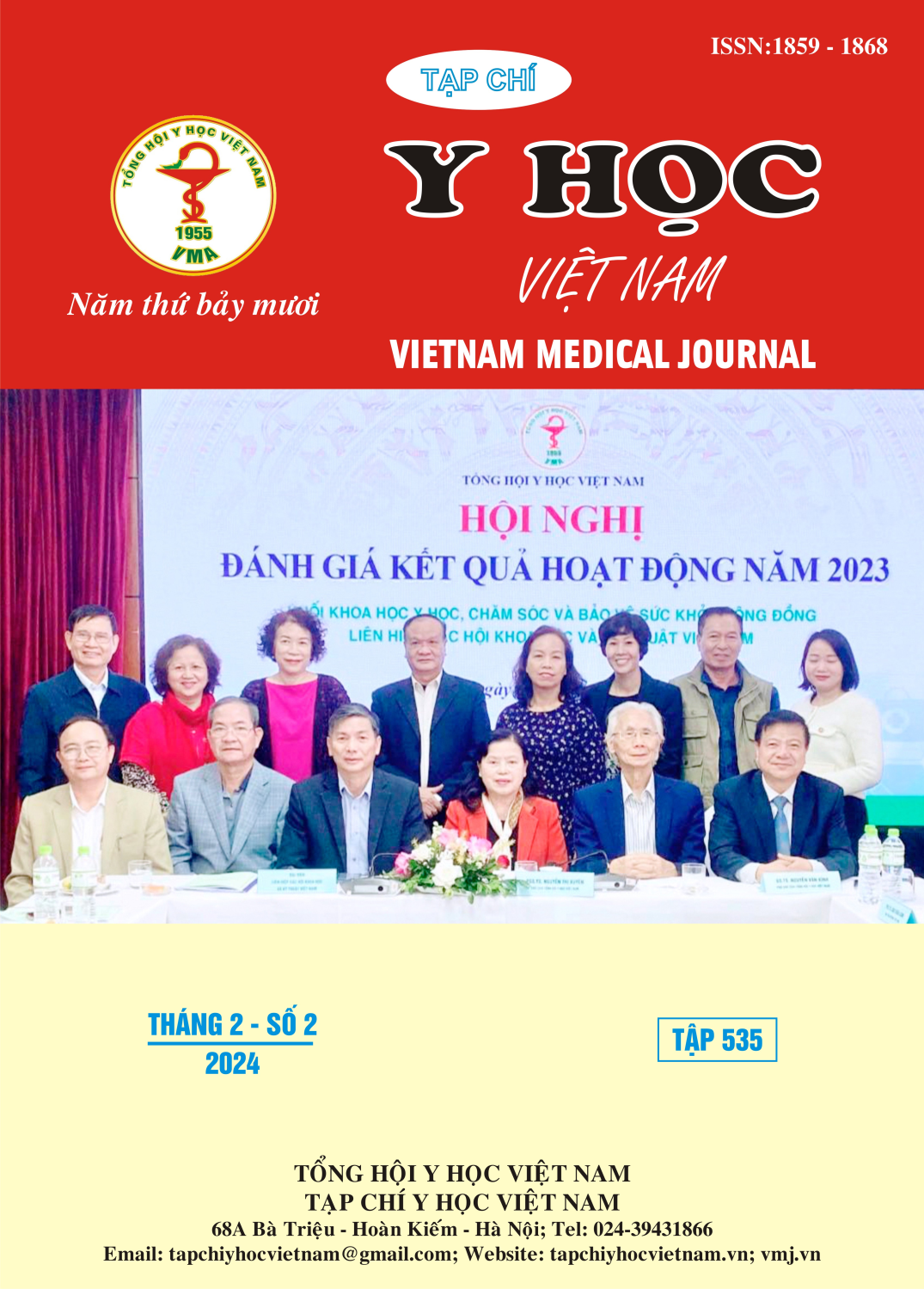SOME FACTORS RELATED TO OSTEOPOROSIS STATUS OF PATIENTS OVER 40 YEARS OLD ATTENDING NATIONAL INSTITUTE OF NUTRITION IN 2022
Main Article Content
Abstract
Objective: To find out some factors related to osteoporosis of patients ≥ 40 years old visiting the Institute of Nutrition in 2022. Method: Cross-sectional study to find out some factors related to osteoporosis of 117 people. Patients ≥ 40 years old come for examination at the Institute of Nutrition. Nutritional status was assessed according to body mass index (Body Mass Index - BMI), classified according to WHO, 1995. Bone password assessment according to WHO standards, 1994. Results: The rate of osteoporosis in women, 35.8%, is 3.5 times higher than in men, 13.6%, which is statistically significant. The rate of osteoporosis increases with age group, the age group over 60 years old has the highest rate of osteoporosis, accounting for 76.9%, the difference is statistically significant. People with a body mass index (BMI) < 18.5 kg/m2 have a risk of osteoporosis 2,8 times higher than the rest. Conclusion: Osteoporosis rate is related to gender, age group, weight and BMI. It is necessary to strengthen health education and communication work to improve knowledge to prevent osteoporosis
Article Details
Keywords
Osteoporosis status, Bone mineral density, National Institute of Nutrition.
References
2. Lê Thị Anh Thơ, “Loãng xương, gãy xương, hormon và một số yếu tố liên quan”, Hội nghị thường niên lần thứ VI, Hội loãng xương Tp.Hồ Chí Minh, Hội loãng xương Hà Nội, 2011, 7-48
3. Nguyễn Thị Ngọc Lan và cộng sự, “Khảo sát yếu tố nguy cơ loãng xương ở phụ nữ Việt Nam từ 50 tuổi trở lên và nam giới từ 60 tuổi trở lên”, Tạp chí Nghiên cứu Y học, 2015, 75(5), 91-98.
4. Trần Bùi Hoài Vọng, Trần Thừa Nguyên, Trần Quang Nhật, Trần Nhật Quang. “Khảo sát tỷ lệ loãng xương của phụ nữ tại bệnh viện Trung ương Huế”. Tạp chí nội tiết & đái tháo đường, 2022, số 51 tr.81-85.DOI: 10.47122/ vjde.2022.51.11.
5. WHO Expert Committee on Physical Status: the Use and Interpretation of Anthropometry (1993): Geneva, Switzerland & World Health Organization (1995). Physical status: the use of and interpretation of anthropometry, report of a WHO expert committee. World Health Organization.
6. World Health Organization (1994), Assessment of fracture risk and its application to screening for postmenopausal osteoporosis: report of a WHO study group, World Health Organization.
7. Boschitsch E.P., Durchschlag E.and Dimai H.P, “Age-related prevalence of osteoporosis and fragility fractures: realworld data from an Austrian Menopause and Osteoporosis Clinic”, Climacteric, 2017, 20,(2), pp. 157-163.
8. Burge R., Dawson-Hughes B., Solomon D. H.and et al. “Incidence and economic burden of osteoporosis-related fractures in the United States, 2005-2025”. J Bone Miner Res, 2007, 22,(3), pp. 465-75.
9. Hồ Phạm Thục Lan, Phạm Ngọc Hoa và Lại Quốc Thái, “Chẩn đoán loãng xương: ảnh hưởng của giá trị tham chiếu”, Thời Sự Y Học, 2011, 57 (1 và 2).
10. Hoàng Thị Bích, Nguyễn Thị Ngọc Lan và Hoàng Hoa Sơn, "Khảo sát yếu tố nguy cơ loãng xương ở phụ nữ mãn kinh từ 60 tuổi trở lên", Tạp Chí Nội Khoa, 2014, 185 - 190.


